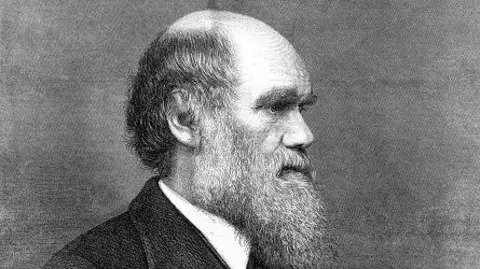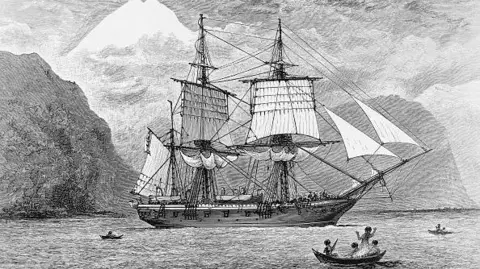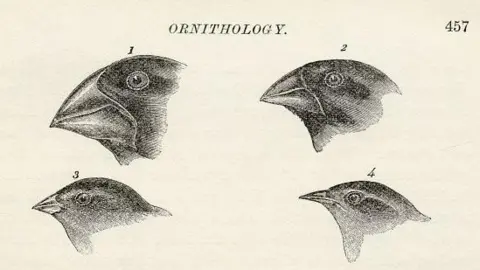Timepiece linked to Darwin voyage cannot leave UK
 Getty Images
Getty ImagesA timepiece used on a seagoing voyage by the HMS Beagle – the ship that carried Charles Darwin on his travels – has been placed under an export bar, meaning it cannot leave the UK.
The move by the Department for Culture, Media and Sport is to allow time for a UK gallery or institution to buy the pocket chronometer, used aboard the vessel from 1831 to 1836.
The voyage is known for taking Shropshire-born naturalist Darwin to the Galapagos islands, where he carried out work that led to his groundbreaking theory of evolution.
Work also took place to test scientific instruments, helping to establish Greenwich in London as the home of timekeeping.
Chronometers are highly-accurate timepieces made for marine navigation, and this device had been made in London in 1830, a year before the ship embarked
By the time the HMS Beagle returned to Britain, it had only lost 33 seconds over five years.
Dr Tim Pestell, a member of the reviewing committee on the Export of Works of Art, said the 1831-36 voyage was "most popularly associated" with Darwin, but its role in testing scientific instruments was less well known.
He said it would be a "tragedy" for the chronometer to be lost to the nation.
 Getty Images
Getty ImagesArts Minister Sir Chris Bryant said Darwin was one of the most well-known figures in the nation's history.
He said the chronometer not only played a part in Darwin's research, but also strengthened Britain's leading position in navigation.
 Getty Images
Getty ImagesThe success of the voyage was put down to the use of chronometers, which measure time with great precision and determine longitude - the imaginary, vertical lines on maps and globes that converge at the North Pole and South Pole.
Greenwich, after the voyage, became internationally-accepted as the Prime Meridian, where longitude is zero.
The Greenwich Meridian provides the measurement and name for the time zone, Greenwich Mean Time.
Valued at £200,000, the chronometer went out of service in 1906 and later passed through the hands of collectors in London and Cambridge.
The export bar remains in place until 10 October.
Follow BBC Shropshire on BBC Sounds, Facebook, X and Instagram.
